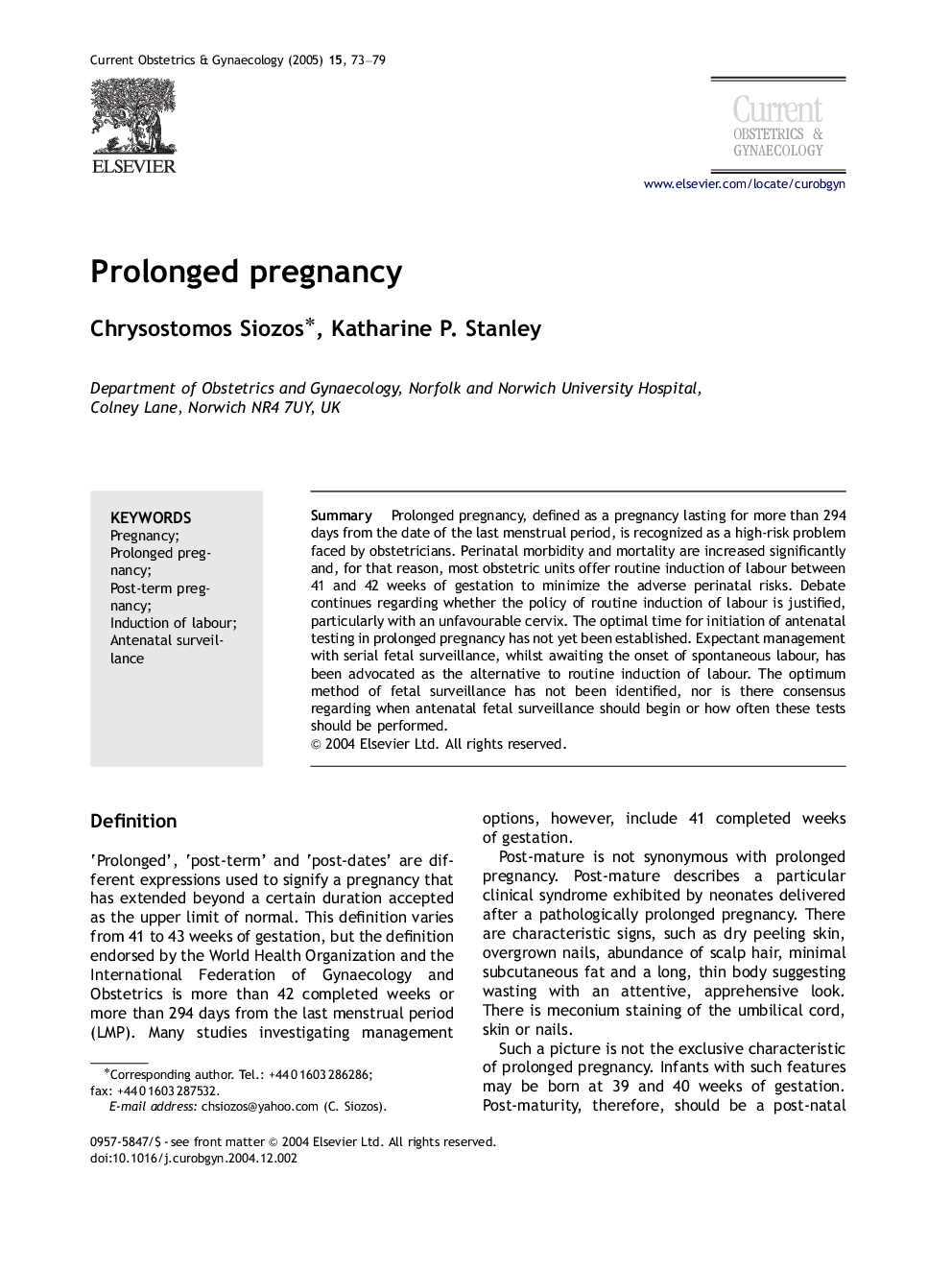| Article ID | Journal | Published Year | Pages | File Type |
|---|---|---|---|---|
| 9318307 | Current Obstetrics & Gynaecology | 2005 | 7 Pages |
Abstract
Prolonged pregnancy, defined as a pregnancy lasting for more than 294 days from the date of the last menstrual period, is recognized as a high-risk problem faced by obstetricians. Perinatal morbidity and mortality are increased significantly and, for that reason, most obstetric units offer routine induction of labour between 41 and 42 weeks of gestation to minimize the adverse perinatal risks. Debate continues regarding whether the policy of routine induction of labour is justified, particularly with an unfavourable cervix. The optimal time for initiation of antenatal testing in prolonged pregnancy has not yet been established. Expectant management with serial fetal surveillance, whilst awaiting the onset of spontaneous labour, has been advocated as the alternative to routine induction of labour. The optimum method of fetal surveillance has not been identified, nor is there consensus regarding when antenatal fetal surveillance should begin or how often these tests should be performed.
Related Topics
Health Sciences
Medicine and Dentistry
Obstetrics, Gynecology and Women's Health
Authors
Chrysostomos Siozos, Katharine P. Stanley,
